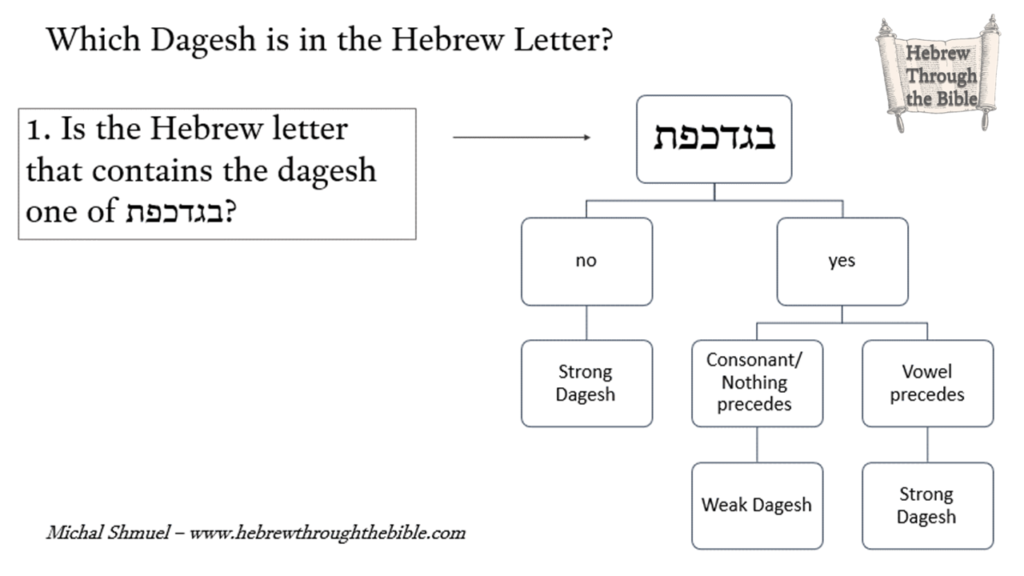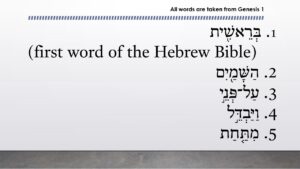With the summary below you can identify whether the Dagesh in any given letter in the image is strong or weak.
Weak Dagesh appears:
- only in begad-kefat consonants (בגדכפת)
- at the beginning of a verse/ in an isolated word, e.g. in a vocabulary word
- (in the middle of a verse) at the beginning of a word that is immediately preceded by a consonant
- at the beginning of a syllable within a word of a consonant immediately precedes
Strong Dagesh appears:
- in all consonants except א, ה, ח, ע, ר
- in a begad-kefat consonants provided that בגדכפת are immediately preceded by a vowel
Flowchart:
Click on the Flowchart below to open it in a new tab for printing
- Ask: Is the letter that contains the dagesh one of בגדכפת?
- Follow the arrow to the right and check against the text

Exercise: Identify the nature of each given dagesh below.

Answers:
- Weak Dagesh in ב because nothing precedes, i.e., the word appears at the beginning of the verse and at the beginning of the Bible.
- Strong Dagesh in ש. It is not a בגדכפת and must therefore be strong.
- Weak Dagesh in פ. The letter is one of בגדכפת and appears directly after a word that ends in a consonant.
- Strong Dagesh in י, because it is not one of בגדכפת. Weak Dagesh in ד, because the בגדכפת letter appears at the beginning of a syllable that is preceded by a consonant (the Shewa is silent).
- Strong Dagesh in ת, because the בגדכפת letter is immediately followed by a vowel.